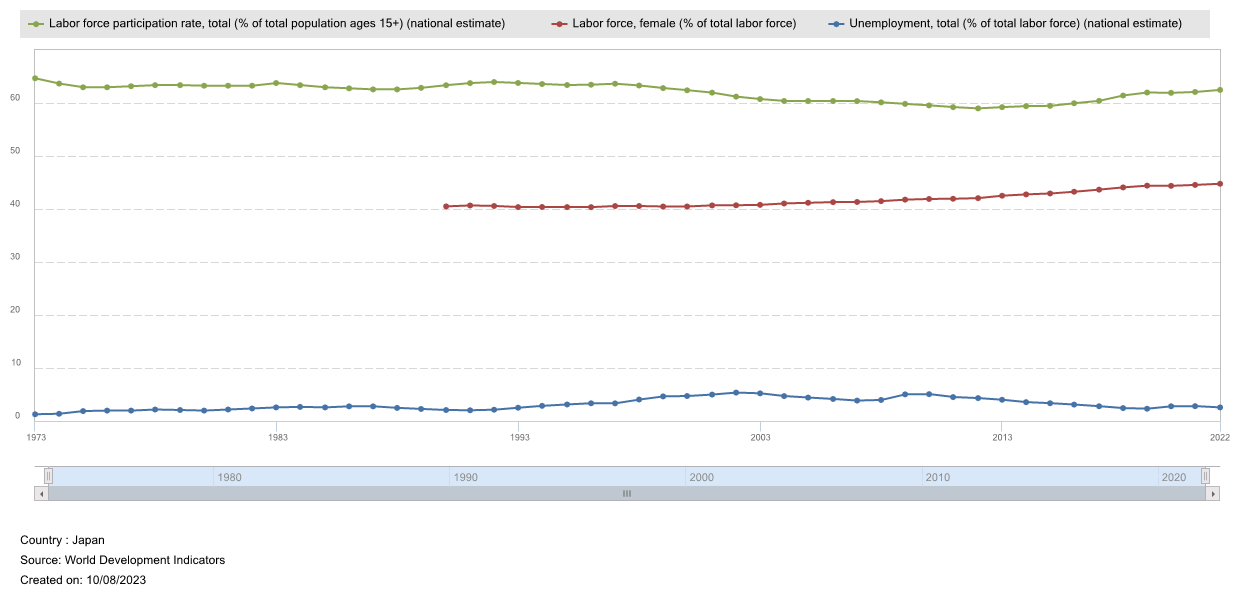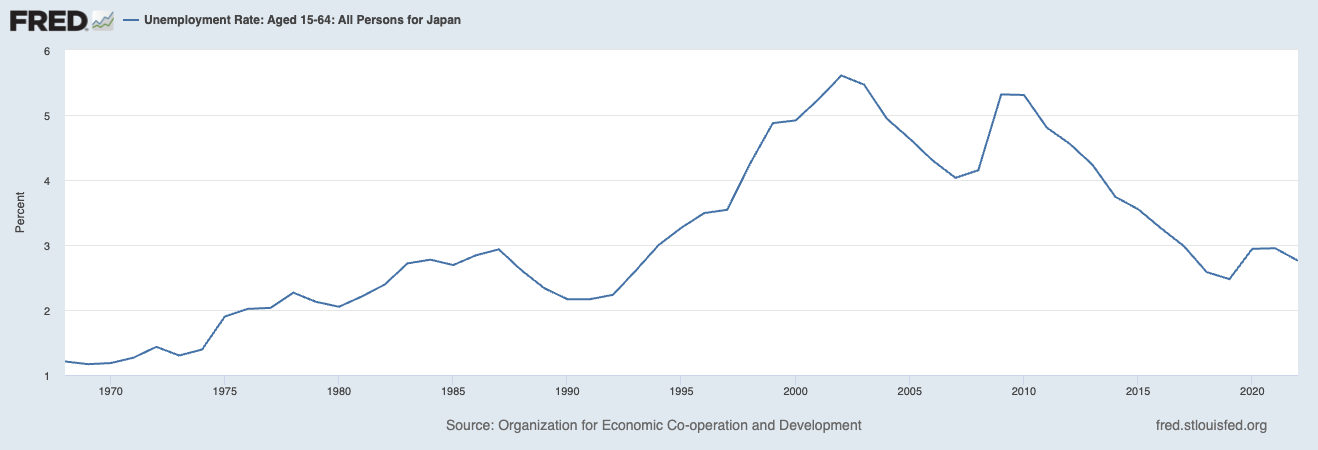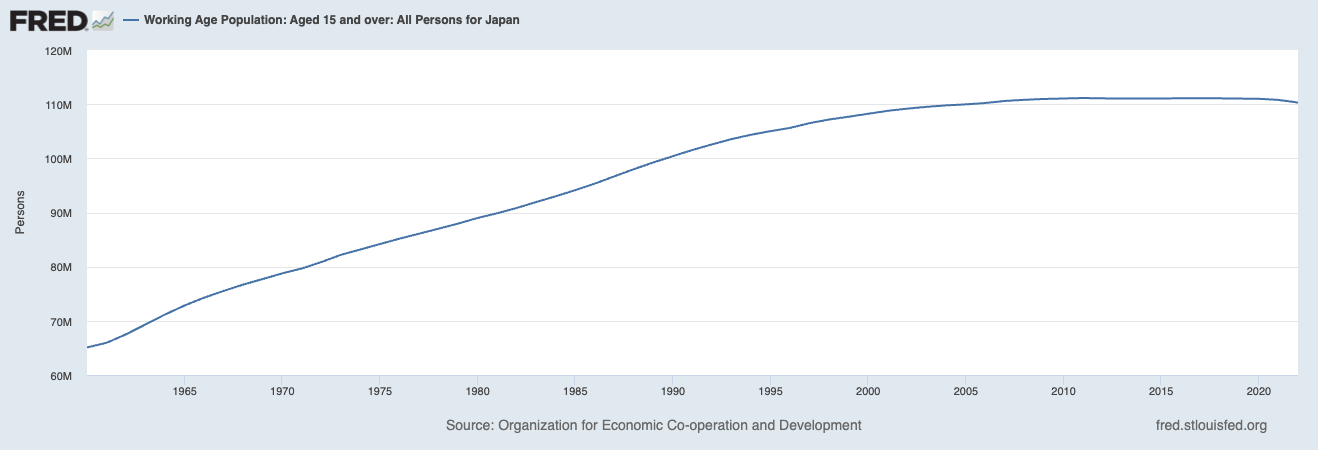Recent updates 🗞️
😟 Israel Palestine conflict breaks out
💸 US spends more on interest on it’s $33tn debt than defence
📈 US 10 yr and 30 yr bond yields highs since 2007
🎓 Learning Global Economics and Finance 2!
Mapping Economic analysis to a practical look at Japan’s labor force
I have been studying economics in class and found the best way to learn is to apply it in practice. So here’s an application of that skill to analyze the historical and current labor economics in Japan.

Japan's Overall Labor Market (1973-2022)
Unemployment rate

Japan's Unemployment rate (1970-2022)
The unemployment rate in Japan has remained relatively low over the last 50 years, with an average of 2.6% (FRED, 2023). However, there have been some fluctuations, with the unemployment rate reaching a high of 5.5% in 1994 during the “Lost Decade” (World Bank, 2023). In recent years, the unemployment rate has been trending downwards, reaching a low of 2.2% in 2022 (FRED, 2023).
Labor force participation rate

Japan's Employment rate (1970-2022)
The labor force participation rate in Japan has increased over the last 50 years, from 63.8% in 1973 to 68.3% in 2022 (World Bank, 2023). This increase has been driven by a number of factors, including rising female labor force participation rates and an aging population.
Minimum wage
The minimum wage in Japan varies by region, but it is generally relatively low compared to other developed countries. In 2023, the minimum wage ranges from ¥930 to ¥1,163 per hour (Ministry of Health, Labour and Welfare, 2023). This is equivalent to between $6.90 and $8.60 per hour at current exchange rates.
Regulations
The Japanese labor market is subject to a number of regulations, including restrictions on temporary work and part-time work. These regulations can make it difficult for employers to hire the workers they need and can also limit the flexibility of workers.
Impact of limits to the functioning of labor markets

Japan's Working age population (1970-2022)
The low minimum wage and regulations in the Japanese labor market can have a number of negative consequences. For example, the low minimum wage can make it difficult for low-income workers to make ends meet. Additionally, the regulations on temporary and part-time work can make it difficult for employers to find the workers they need and can also limit the flexibility of workers.
Conclusion
The labor market conditions in Japan have generally been favorable over the last 50 years, with low unemployment rates and rising labor force participation rates. However, there are some limits to the functioning of the Japanese labor market, such as the low minimum wage and regulations on temporary and part-time work. These limits can have a number of negative consequences, such as making it difficult for low-income workers to make ends meet and limiting the flexibility of workers.
Cheers 🥂